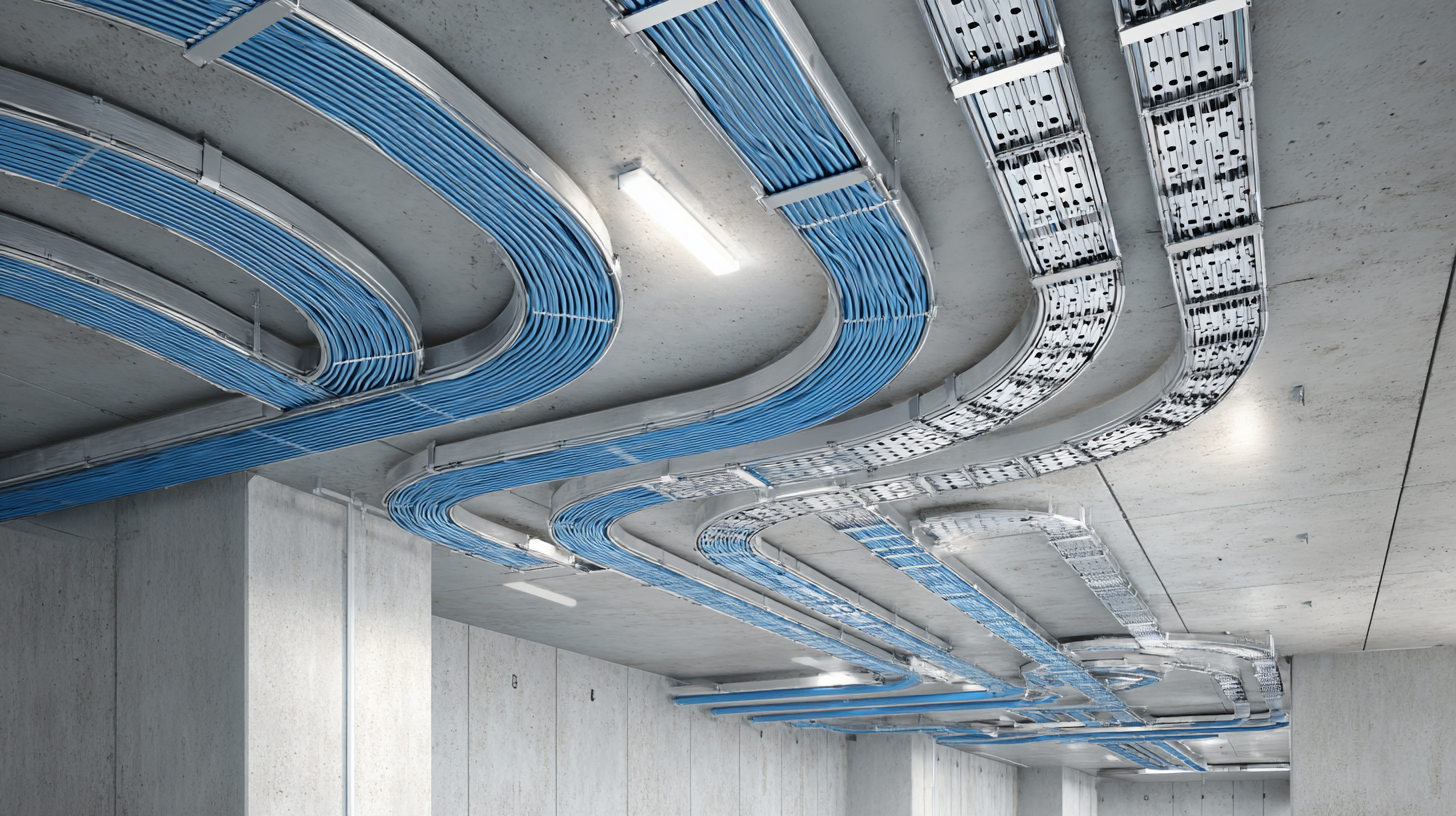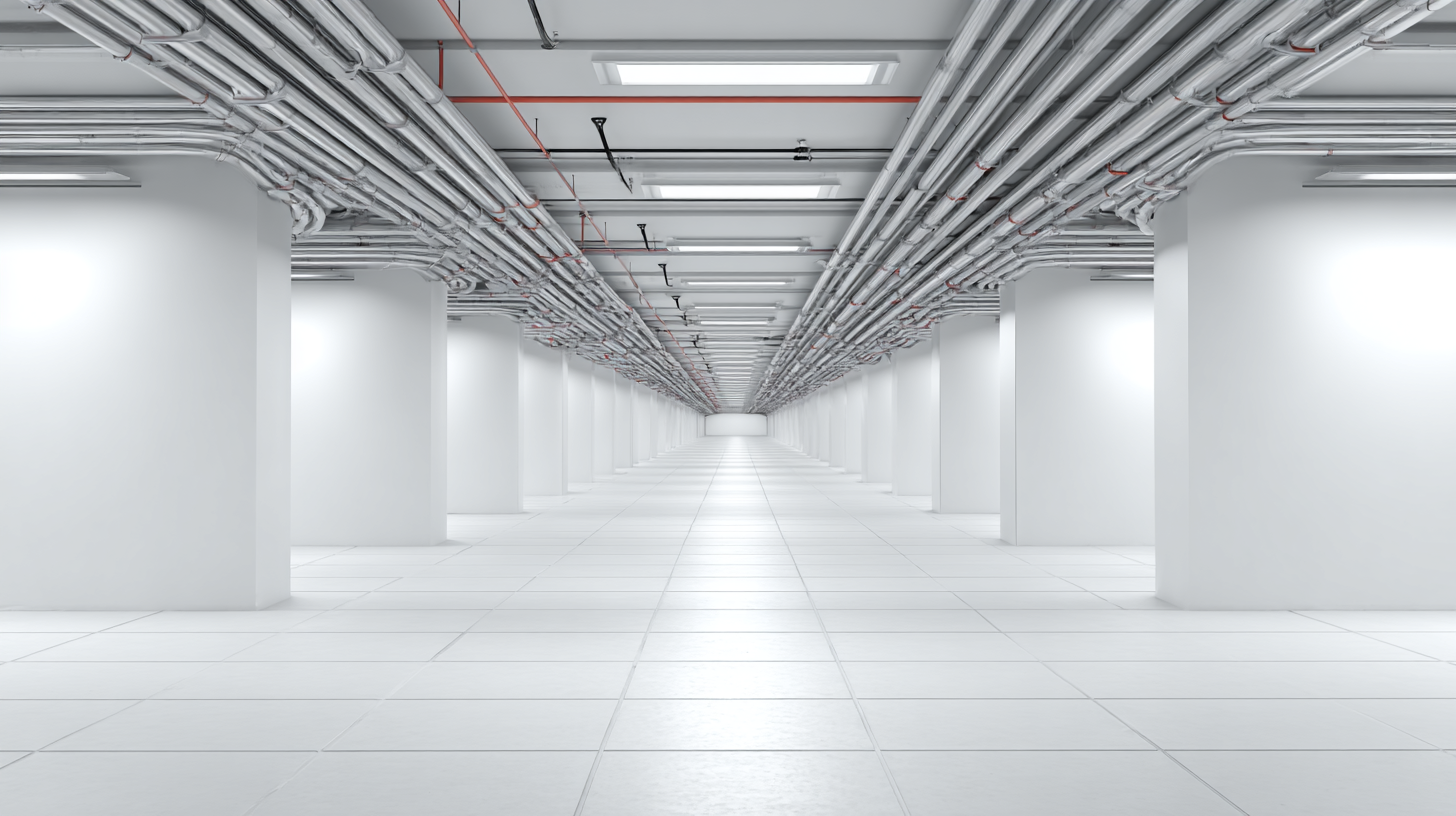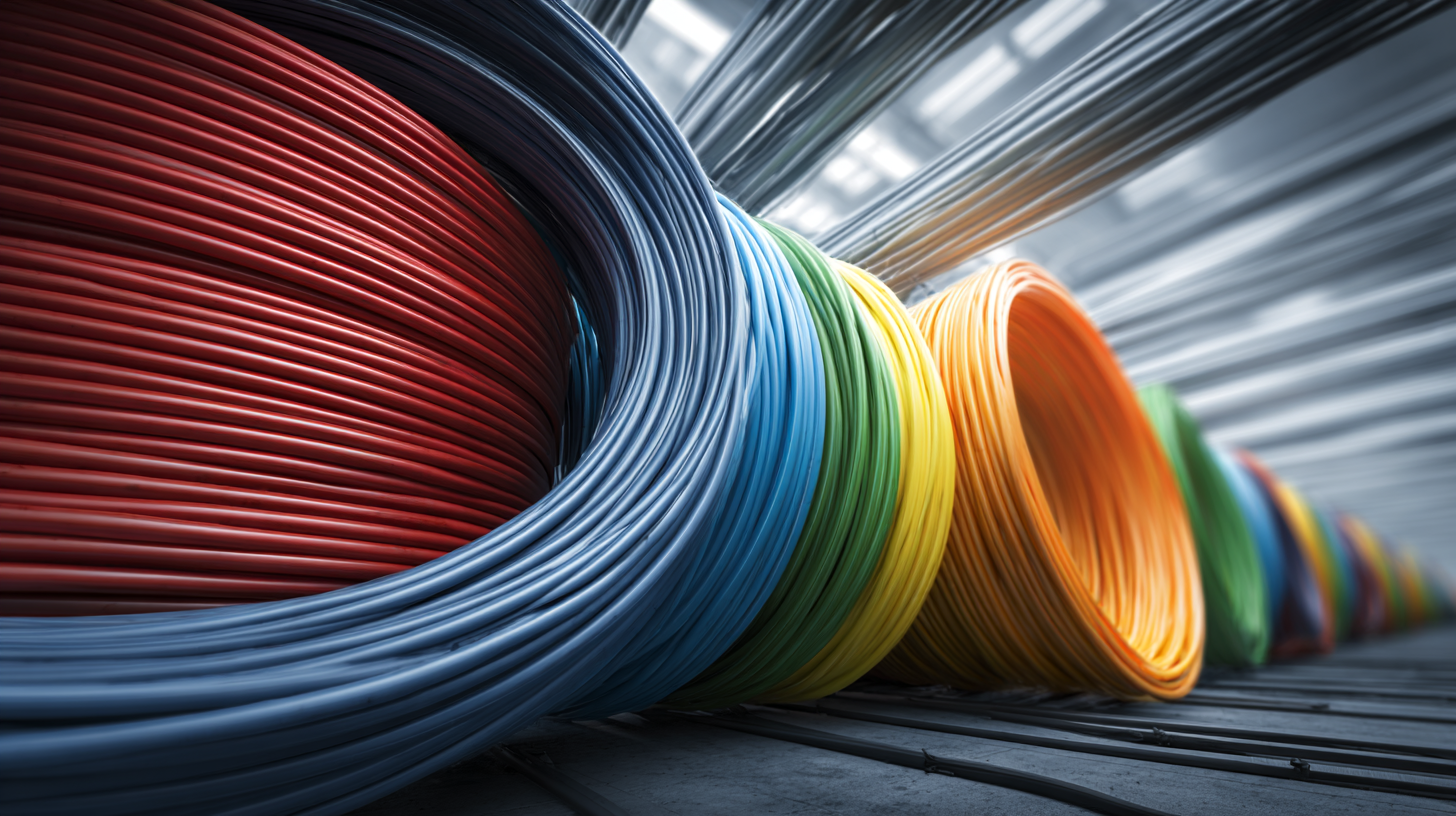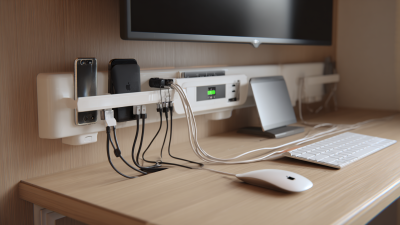Exploring the Essential Benefits of Cable Ducts in Modern Infrastructure Design
In the realm of modern infrastructure design, the integration of efficient systems is paramount for ensuring seamless connectivity and functionality. One of the key components that plays a crucial role in optimizing these systems is the cable duct. These specialized conduits not only safeguard electrical and telecommunication cables from environmental damage but also enhance the organization and management of complex wiring networks within buildings and urban landscapes.

Understanding Cable Ducts: The Backbone of Efficient Infrastructure
Cable ducts have become a critical component in modern infrastructure design, acting as the backbone for efficient cable management in various applications. According to a report by the International Electrotechnical Commission, the global market for cable management systems, including cable ducts, is projected to reach USD 8.6 billion by 2024, growing at a CAGR of 7.5%. This steady growth highlights the increasing reliance on organized cable solutions to enhance safety and operational efficiency.
The benefits of utilizing cable ducts are numerous. They not only provide protection for electrical cables and telecommunications connections but also facilitate easy maintenance and upgrades. A study published by the Institute of Electrical and Electronics Engineers (IEEE) indicates that organizations that implement structured cabling systems, which often include cable ducts, can reduce installation costs by up to 20% over five years. Additionally, cable ducts contribute to improved airflow and heat dissipation, which is essential for maintaining the integrity and longevity of electrical systems in data centers and commercial buildings. These factors cumulatively reinforce the notion that cable ducts are indispensable for designing resilient and efficient modern infrastructures.
Exploring the Essential Benefits of Cable Ducts
This chart illustrates the key benefits of cable ducts in modern infrastructure design, highlighting their importance in efficiency and safety.
Identifying Key Types of Cable Ducts for Various Applications
The diverse applications of cable ducts are crucial in modern infrastructure design, catering to the evolving needs of telecommunications, electrical wiring, and smart systems integration. Various types of cable ducts serve distinct purposes, ensuring efficiency and safety in installation and maintenance. Microducts, for example, are increasingly favored in data-intensive environments due to their ability to house fiber optic cables and facilitate high-speed data transmission. This sector is witnessing significant growth, with a projection to expand from $4.41 billion in 2022 to $9.08 billion by 2029, reflecting the rising demand for efficient cable management solutions.

In addition to microducts, various wiring ducts and conduits are designed to meet specific environmental and safety standards. Flame-retardant ducts are essential in minimizing fire hazards, while innovative options like halogen-free conduits provide additional safety for sensitive installations. The North American wiring duct market signals this trend, expanding at a CAGR of 3.9% as more infrastructure projects embrace smart technologies and environmentally conscious materials. As urbanization accelerates, especially in nations like India, the demand for reliable and robust cable duct solutions continues to grow, highlighting the pivotal role they play in modern engineering and design.
Evaluating the Safety Features of Modern Cable Duct Systems
 Modern cable duct systems play a crucial role in enhancing safety within infrastructure design. According to the International Electrotechnical Commission (IEC), improper management of cables can lead to significant fire hazards, accounting for approximately 28% of building fires caused by electrical faults. Cable ducts effectively contain and organize electrical wiring, significantly reducing the risk of accidental damage and minimizing potential electrical hazards.
Modern cable duct systems play a crucial role in enhancing safety within infrastructure design. According to the International Electrotechnical Commission (IEC), improper management of cables can lead to significant fire hazards, accounting for approximately 28% of building fires caused by electrical faults. Cable ducts effectively contain and organize electrical wiring, significantly reducing the risk of accidental damage and minimizing potential electrical hazards.
Moreover, contemporary cable duct designs are increasingly incorporating fire-resistant materials and features. A recent report by the National Fire Protection Association (NFPA) highlights that using cable ducts constructed from non-combustible materials can lower fire transmission rates, leading to reduced damage and loss during incidents. Additionally, advanced ventilation systems within these ducts can prevent overheating, a key contributor to electrical fires. By investing in modern cable duct systems, infrastructure projects not only adhere to stringent safety regulations but also foster a proactive approach to fire risk management, ensuring both the protection of assets and the safety of inhabitants.
Integrating Cable Ducts into Sustainable Building Designs
Integrating cable ducts into sustainable building designs is crucial for optimizing energy efficiency and minimizing environmental impact. According to the Global Cable Management Systems Market report by ResearchAndMarkets, the demand for cable management solutions, including ducts, is projected to grow at a CAGR of 8.9% from 2021 to 2026, driven by an increasing focus on sustainable construction practices. Cable ducts facilitate organized wiring and are essential in reducing electromagnetic interference, which can enhance the performance of energy-efficient systems like LED lighting and smart grids.
Moreover, incorporating cable ducts into building designs promotes ease of maintenance and flexibility in adapting to future technological changes. A survey conducted by the International Energy Agency revealed that energy-efficient buildings can reduce energy consumption by up to 50%, indirectly highlighting the role of well-implemented cable management systems. By allowing for easy upgrades and modifications, cable ducts support the longevity of sustainable infrastructure, making them an integral component in the development of eco-friendly and adaptable buildings.
Best Practices for Maintenance and Upkeep of Cable Ducts in Infrastructure
Cable ducts play a critical role in modern infrastructure, especially in environments hosting complex technologies such as AI supercomputers. Proper maintenance and upkeep of these ducts are essential for ensuring optimal performance and longevity. Regular inspections should be implemented to identify any signs of wear or potential blockages. Cleaning the ducts periodically is vital to prevent dust and debris accumulation, which can hinder airflow and lead to overheating of the equipment housed within.
Moreover, implementing best practices in cable duct design is crucial for facilitating easy access during maintenance. This includes adequate spacing and organization within the ducts to accommodate cable management systems effectively. Adopting materials that are resistant to environmental stresses, along with adequate sealing techniques, can greatly enhance the durability of cable ducts, ensuring they continue to support robust infrastructure projects like large-scale AI computing clusters. In environments where high-performance computing is prevalent, maintaining the integrity of the cable ducts is not just a matter of aesthetics but a necessity for operational efficiency.
Exploring the Essential Benefits of Cable Ducts in Modern Infrastructure Design - Best Practices for Maintenance and Upkeep of Cable Ducts in Infrastructure
| Benefit | Description | Best Practice for Maintenance |
|---|---|---|
| Protection | Cable ducts provide a secure pathway for electrical and telecommunications cables, protecting them from external damage. | Regular inspections for cracks and maintenance repairs to ensure structural integrity. |
| Organization | They help in organizing cables, minimizing clutter and confusion during installations and maintenance. | Label cables clearly and maintain a documented layout of the duct systems. |
| Safety | Ducts reduce the risk of accidental damage from environmental factors, thus enhancing safety for personnel. | Conduct safety audits and training for staff on handling and accessing cable ducts. |
| Accessibility | They allow easy access to cables for maintenance and upgrades without disturbing the infrastructure. | Establish clear access procedures and keep pathways free from obstacles. |
| Durability | High-quality materials used in ducts ensure longevity and resistance to weather and other environmental elements. | Monitor wear and tear, replacing sections as necessary to maintain functionality. |
Related Posts
-

Revolutionize Your Workspace: Unleashing the Power of Innovative Cable Holders
-

Ultimate Guide to Innovative Cable Holder Solutions for a Clutter Free Space
-

Understanding the Importance of Duct Cable in Modern Communication Systems
-

Understanding the Basics of Cable and Wire Types for Everyday Applications
-

10 Essential Tips for Installing Electric Cable Ducts Safely and Effectively
-

Maximizing Electrical Safety: The Essential Role of Cable Ducts in Modern Infrastructure

